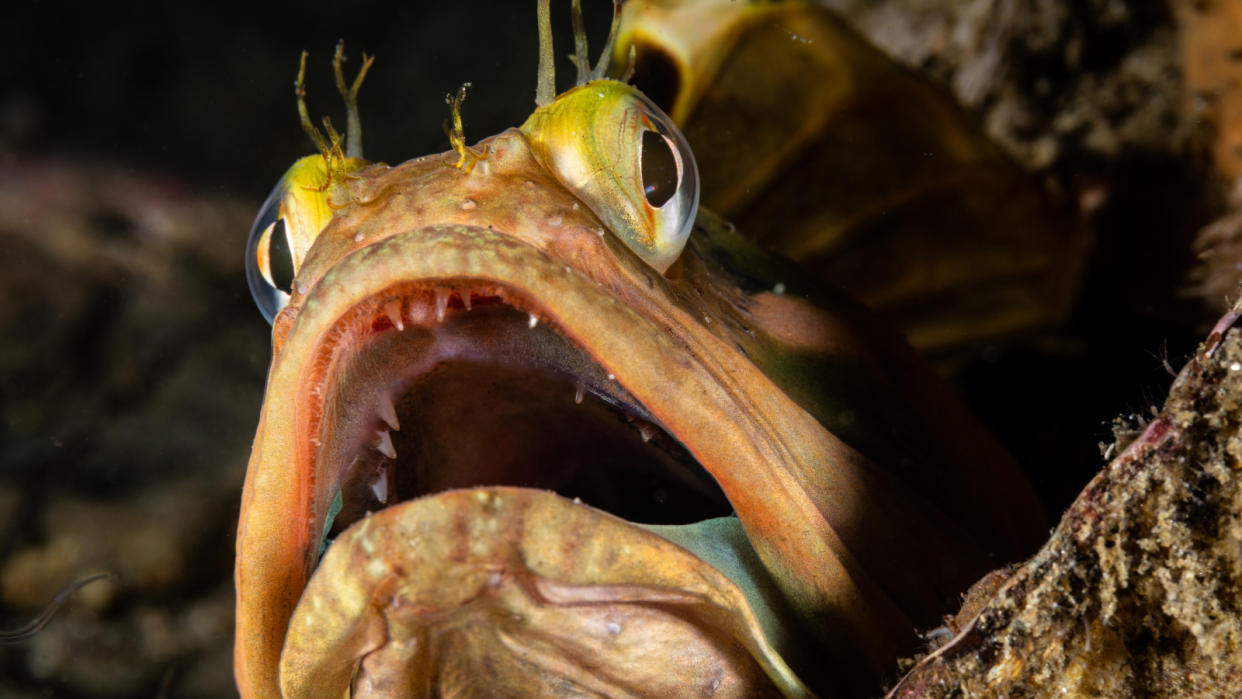Sarcastic fringehead: The angry little fish that engages in mouth-to-mouth combat

Name: Sarcastic fringehead (Neoclinus blanchardi)
Where it lives: From San Francisco, to Baja California, Mexico
What it eats: Small prey such as fish, crustaceans, and squid eggs
Why it's awesome: Sarcastic fringeheads are best known for their silly name, extreme aggression and unconventional fighting style — essentially, angrily yawning at each other.
Usually found on rocky reefs or sandy seabeds between around 9 and 240 feet (3 to 73 meters) below the water's surface, these solitary fish make their home inside shells, clam burrows, rock crevices, "or even in empty cans and bottles if there is pollution," according to a 2014 AAAS article.
Despite being small — usually around 3 to 8 inches (7.5 to 20 centimeters) long, although they can grow to 12 inches (30 cm) — they can be extremely aggressive and attack almost anything that strays too close, including divers, according to the Aquarium of the Pacific in California.
If a female chooses a male to be her mate, she lays her eggs in his den for him to fertilize. He's then responsible for protecting the eggs until the young hatch.
Related: Fish moms that carry young in their mouths sometimes eat their babies for breakfast
This makes these animals highly territorial, and there is intense competition between males for prime spots in which to set up their home: if they don't have a burrow, they won't be able to reproduce.
RELATED STORIES
—Pigbutt worm: The deep-sea 'mystery blob' with the rump of a pig and a ballooned belly
—Which animal has the stretchiest mouth?
—Nightmare fish may explain how our 'fight or flight' response evolved
When fighting over territory, the fish try to intimidate their opponents by opening their jaws wide to display the bright colors inside. "The mouth's intimidating coloration, combined with the extreme nature of its size (which may be as much as four times its closed size) allows the larger male to establish dominance over the smaller," according to the conservation organization Oceana.
If the competitor isn't scared off by the giant, colorful mouth display, the pair will launch into mouth-to-mouth combat, pressing their wide mouths together. "While this may look like the fish are kissing, they are in fact aggressively defending their territory from each other," Inamura said. The bigger the fish's mouth, the more chance it has of winning this battle.
These over-the-top displays have earned the fish the "sarcastic" part of their name.

